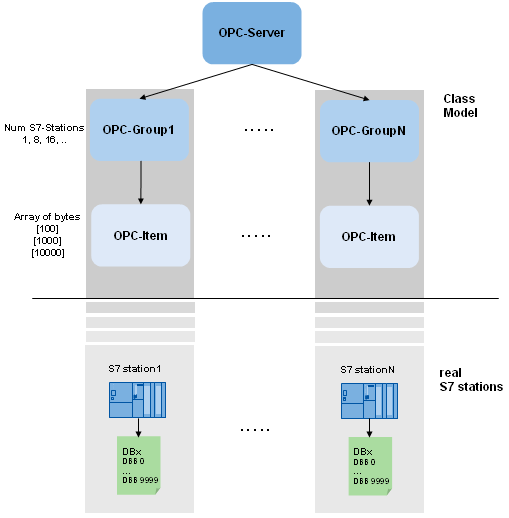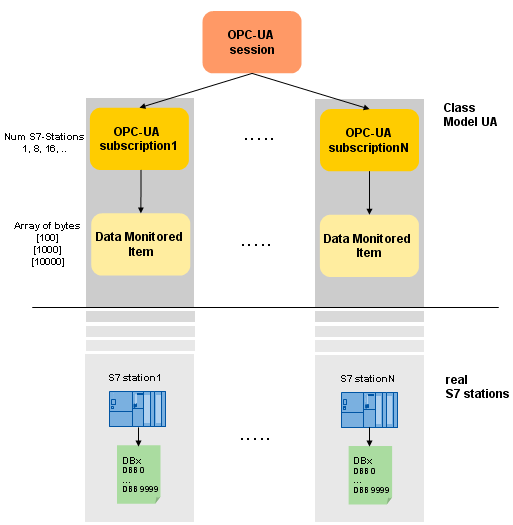

Apart from the S7 stations, the test OPC client is the central measuring object in the entire chain. In the following, we give you an overview of its properties.
Overview
For the measurements there are two options available for the locality of the OPC client.
Functions of the OPC TestClient
The OPC TestClient is supplied with the measured configurations by the automatic measuring device.
Program properties of the OPC TestClients
Programming languages:
Accessing the OPC server is performed runtime-optimized with different programming languages:
The OPC clients are programmed runtime optimized.
The communication with the PCI-IO card is part of the OPC TestClient.
Development environment:
.NET Framework V2.0 with Microsoft Visual Studio 2005
Image of the S7 stations in the OPC client (local & remote)
The following image shows the standard OPC class model applied for the (D)COM/UA interface. Each S7 station with its variables is mapped in the object of the the OPC group/OPC UA subscription class. The number of OPC group/subscription objects is dynamically created by the OPC TestClient in the initialization phase, depending on the measuring constellation. Each object of the OPC item/data monitors item class maps the variables from the S7 station in an array.


Communication with PCI-IO card
In order to exchange control signals with gauge and automatic measuring device the interrupt-capable PCI-IO card APCI-1500 by ADDI-DATA was used.
Latency time of the measuring system:
The runtime of the trigger signal from and to the OPC test client via the PCI-IO card was detected by mirroring routine in the OPC test client. For this purpose the time of the digital input of the PCI-IO card to the test OPC client and the instant mirroring of the signal and output on a digital output of the PCI-IO card was detected. The measurement was repeated 500 times.
Results of the latency time measurement:
T latencyMin: 1.01 ms
T latencyAvg: 5.2 ms
T latencyMax: 6.82 ms
This means a trigger signal from the digital input of the card to the OPC TestClient needs T latency/2 (here: on avarage approx. 2.6 ms)
Note
These values are only valid for the IPC environment used. For other PC systems the values may vary.